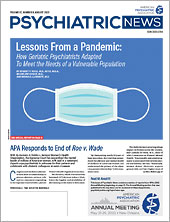The Food and Drug Administration (FDA) has cleared for marketing the first diagnostic laboratory test to aid in the diagnosis of Alzheimer’s disease. The Lumipulse G β-Amyloid Ratio (1-42/1-40) test, manufactured by Fujirebio Inc., is intended for use in adults aged 55 years and older who present with cognitive impairment.
The test measures two variants of the amyloid beta protein in cerebrospinal fluid (CSF). A positive result suggests that a patient likely has amyloid plaques in the brain—a hallmark feature of Alzheimer’s disease.
Amyloid plaques can be identified definitively only with positron emission tomography (PET) brain scans—a process that is time consuming, expensive, and exposes people to radiation. A lumbar puncture to acquire CSF, though potentially uncomfortable, is cheaper than a PET scan and can usually be performed on an outpatient basis.
“A lot of people are looking ahead to blood-based Alzheimer’s biomarkers, but the CSF will always be a better source than plasma, because it has a direct connection with the brain,” said Anne Fagan, Ph.D., a professor of neurology at Washington University School of Medicine and the Fluid Biomarker Core Leader of Washington University’s Knight Alzheimer Disease Research Center. Fagan, who has received research support from Fujirebio and other diagnostic companies, says she has used Lumipulse assays in her Alzheimer’s research studies and found them to be easy to work with and reliable.
“With this test now available, I think that more patients will get an early confirmation of an Alzheimer’s diagnosis,” said Henrik Zetterberg, M.D., Ph.D., a professor of neurochemistry at the University of Gothenburg in Sweden. Zetterberg, who also studies Alzheimer’s biomarkers, noted that an early diagnosis can give patients more time to try treatments that may slow cognitive decline and prepare for the future.
There are, however, limits to what the Lumipulse test can tell patients and their physicians, Fagan said.
“This is not giving you a diagnosis of Alzheimer’s; it’s giving a diagnosis of amyloidosis.” She noted that amyloid buildup is associated with other neurodegenerative disorders, such as Lewy body dementia. In addition, many people can develop amyloid plaques and not yet have the associated neurodegeneration that would lead to dementia, she said.
The FDA noted that the results of the Lumipulse test should be interpreted in conjunction with other clinical information before any diagnoses are made.
The FDA cleared the Lumipulse test following a study of CSF samples from 292 older adults participating in the Alzheimer’s Disease Neuroimaging Initiative. In this clinical study, 97% of adults with a positive Lumipulse test had amyloid plaques in their brains as confirmed by PET scan, while only 16% of adults with a negative Lumipulse test had confirmed amyloid plaques. The low rate of false positive results in the study suggests that those scanned with the test are unlikely to be incorrectly diagnosed with amyloid plaques, which could result in unnecessary treatments and psychological distress. False negative test results could lead to potential delays in diagnosis.
Zetterberg said that as other CSF assays come to market, the testing process will become even more comprehensive, which may enhance accuracy and/or uncover the specific underlying disorder. “That’s another advantage of CSF testing; it is very versatile. One can screen for numerous different biomarkers in the same sample,” he said. “With a PET scan, you can see amyloid and only amyloid.”
Both Zetterberg and Fagan believe PET scans still have use in clinical settings. “Scans have drawbacks, but they do give a spatial representation of the amyloid buildup, which may impact clinical decision-making,” Fagan said. ■
